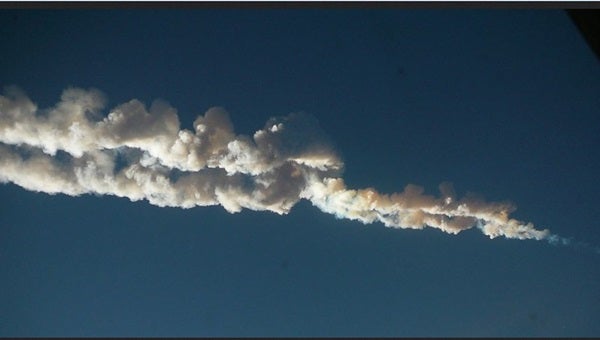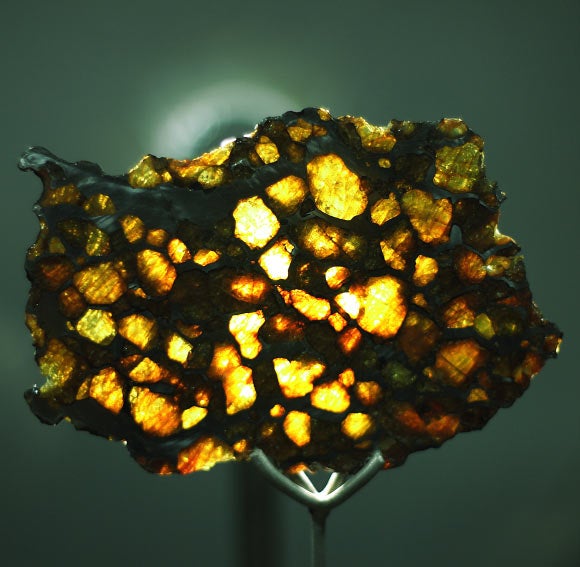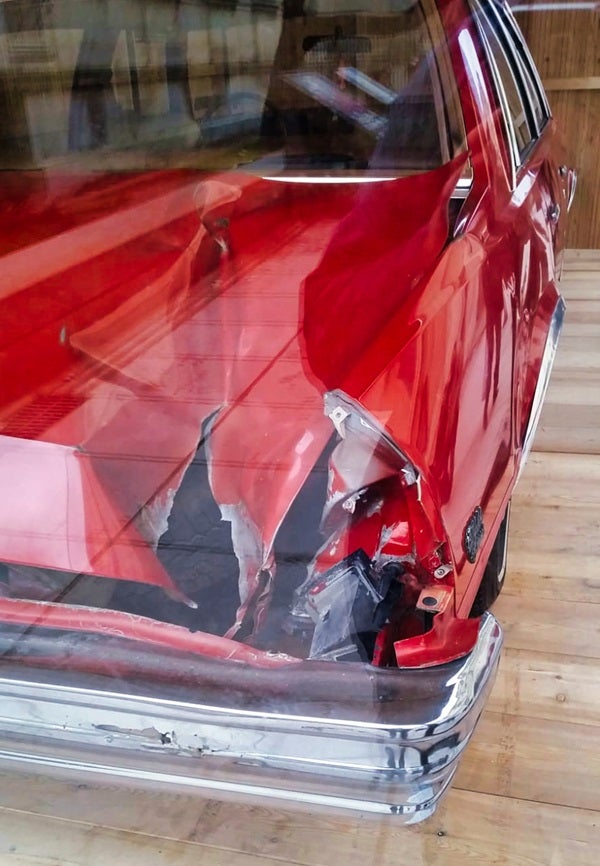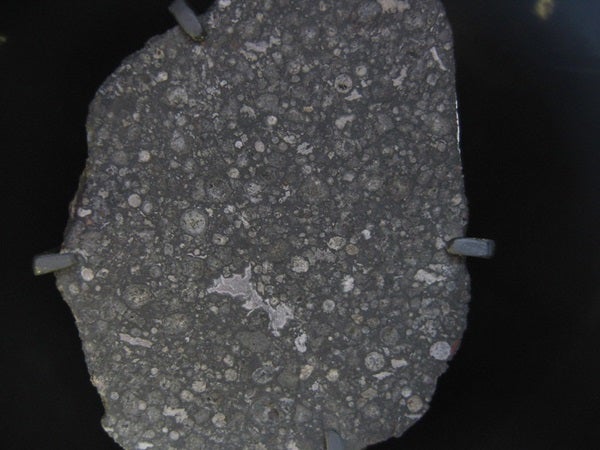NASA and other enterprising space agencies exert a lot of effort boldly sending robots to explore the strange worlds in our solar system and seek out new data by analyzing their composition. In the case of the Moon, they spent a huge amount of money sending people there to fill bags with rocks and bring them back to Earth for study.
But every day of every year, priceless samples of asteroids, the Moon, and even Mars arrive on Earth naturally. After spending millions perhaps even billions of years in space orbiting the Sun, these meteoroids — chunks of rock or iron or even a mixture of the two, blasted off their parent bodies by violent collisions or impacts — cross Earth’s path purely by chance. After tearing through our atmosphere as shooting stars, or meteors, they land with a whumpf, waiting to be found. One probably landed somewhere as you were reading this sentence!
When they hit the ground, we call these interplanetary rocks meteorites, and they are not just highly prized by scientists but by collectors and amateur astronomers, too. Why? Well, let’s face it, as valuable as meteorites are scientifically, it’s just amazing and thrilling to be able to touch, hold, and perhaps even own a piece of something from “out there.” They’re like fossils. But cooler.
It’s easy to buy meteorites these days; there are lots of individuals and companies that sell them, as a quick Google search will confirm. But not all meteorites are created equal. Some are more prized by collectors than others because they are rare, particularly attractive to look at, or have a remarkable origin story.
Here are some of these celebrity meteorites.
1. Imilac
If you want to own a meteorite with the “wow!” factor, Imilac is it. In 1822, a large number of weathered, charred-looking rocks were found scattered across an area of the Atacama Desert in Chile. No one knows when they fell, but these turned out to be a rare and exotic class of stony-iron meteorite called pallasites, which contain crystals of olivine embedded within an iron matrix. When lit from behind, pallasite slices look like beautiful stained glass windows as their olivine crystals shine amber and gold, which is why they are so highly prized by collectors — and so expensive. If your budget is limited, consider a “metal skeleton” specimen — a small, gnarled, shrapnel-like piece of Imilac whose olivine crystals have eroded away, leaving behind their metal framework.
2. Chelyabinsk
On the morning of Feb. 15, 2013, people living around the Russian town of Chelyabinsk were startled by the sight of a slow-moving shooting star, brighter than the Sun, scraping across the icy sky. Numerous car dashcams and building security cameras recorded the phenomenon before it faded, leaving a curdled, gray-white smoke trail. But that was just the warm-up act for a shock wave that shattered windows and knocked terrified people in offices and schools off their feet. What many must have thought was a nuclear attack was actually a small Near-Earth Asteroid about 66 feet (20 meters) across exploding some 16 miles (26 kilometers) above the ground with a force equivalent to 30 Hiroshima bombs. A search recovered many pieces of what we now call the Chelyabinsk meteorite, including a 1,440-pound (654 kilograms) fragment that was dragged up from the bottom of a frozen lake. There are many smaller fragments available on the market if you want your own piece.
3. Peekskill
If you’ve watched Armageddon, you may remember the scene where a meteorite plows through a car. Well, on Oct. 9, 1992, 17-year-old Michelle Knapp was sitting in her living room in Peekskill, New York, when she heard what sounded like a “three-car crash” outside. Going out to investigate, she found a hole in the back of her recently bought Chevrolet Malibu and a dark rock, warm to the touch, embedded in the ground beneath it. This was a 28-pound (12.6 kg) stone meteorite that had just left a sputtering fireball over the East Coast. Thousands of people witnessed it, including many at evening sporting events. Don’t feel too sorry for Michelle, though — she purportedly sold the Peekskill meteorite for $50k and her car now travels the world as a Guest of Honor at meteorite and mineralogy shows. Small pieces of Peekskill are available to collectors, some even bearing flecks of red paint from the car.
4. Canyon Diablo
If there’s a “must-have” meteorite for the budding collector, it’s Canyon Diablo. Pieces with this name come from perhaps the most famous meteorite impact site in the world: Meteor Crater. Approximately 50,000 years, ago a nickel-iron asteroid around 164 feet (50 m) wide slammed into the Arizona desert close to Diablo Canyon, vaporizing any poor mammoths grazing there who truly were in the wrong place at the wrong time. The explosion blasted away 175 million tons of rock, leaving behind a square-shaped crater nearly a mile (over a kilometer) wide and nearly 560 feet (170 m) deep. Most of the asteroid vaporized in the impact, leaving only scraps behind, but to date more than 30 metric tons of scraps have been recovered, and most meteorite collectors have specimens from this site. Typically these look like warped chunks of metal, either rusty or polished. The largest piece of the impactor recovered was a 1,400-pound (639 kg) hunk known as the Holsinger meteorite, which is now on display in the busy Visitor Center on the crater’s rim.
5. Allende
People love holding and owning old things — Roman coins, Greek statuettes and fossils, of course — but if you want to own something really old, then you need a piece of the Allende meteorite. On Feb. 8, 1969, after a car-sized meteoroid exploded high above Mexico, dark rocks spattered down from a clear sky close to the small town of Pueblito de Allende, scattering across a 31-mile-long (50 km) strewn field. These strange stones were as black as coal on the outside but had a dark gray interior. At first, they didn’t appear to be anything special, but laboratory analysis showed these were pieces of a rare type of ancient and primitive rock called a carbonaceous chondrite, marked by many tiny, pale spots and grains, or chondrules, contained inside. These chondrules themselves contain dust grains dating back to the very birth of the solar system.













